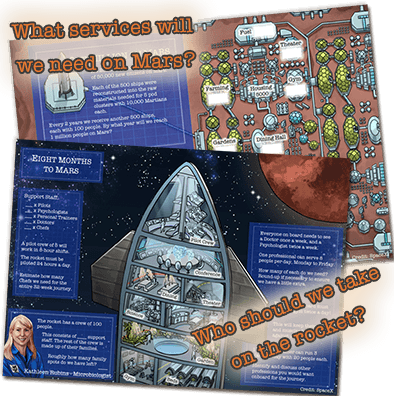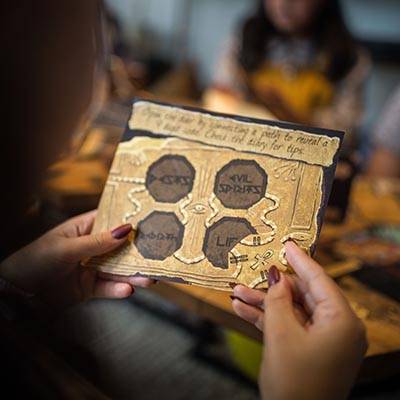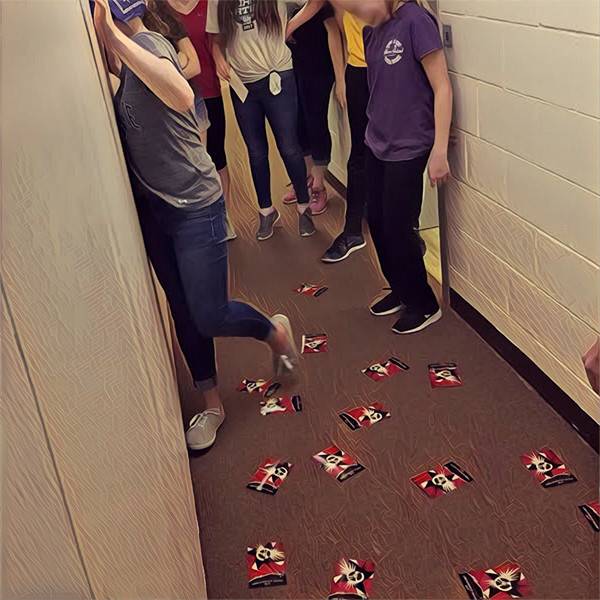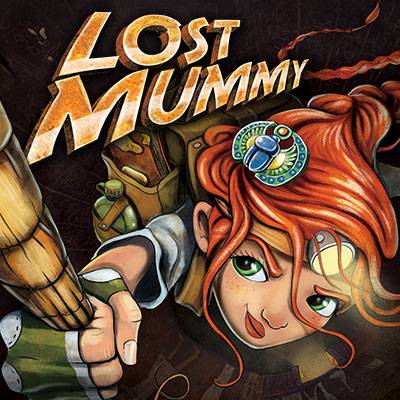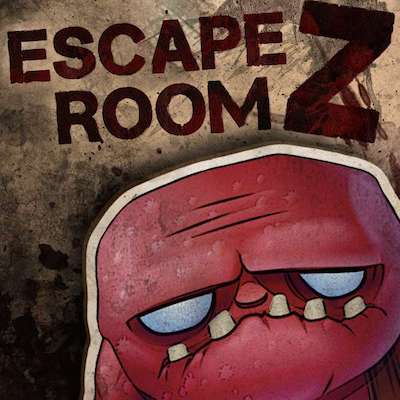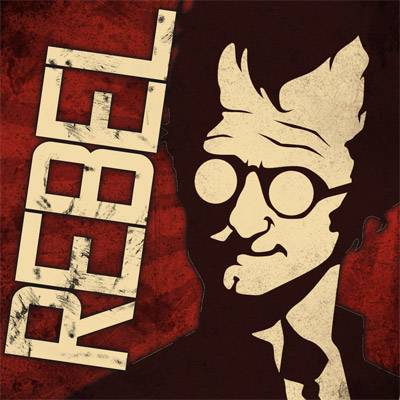Why Escape Games Are The Boredom Crushing Tech Your Students NEED.
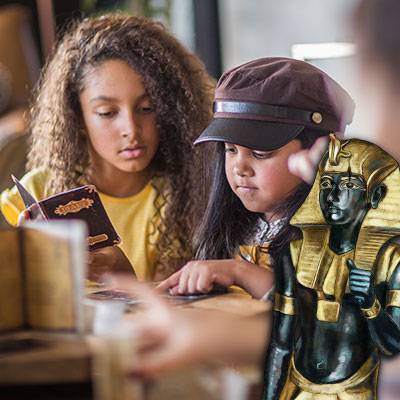
Here's how to engage your students by transforming your classroom into an escape room. Just download the printable kit, set it up in your class, and you're ready to thrill.
Do your students have 'just-not-interested' syndrome?
If only you could film your lessons, add a bunch of rapid-fire editing (and a few random cats), and show the results in four minute bursts!
Even then, you still might miss the secret combination that grabs your students’ attention.
Let’s face it: videos of snowboarding FAILs and idiots attempting the cinnamon challenge are pretty hard acts to follow.
Maybe you’re looking for the wrong kind of combination . . .
Why not give a combination lock a go?
Confused?
Keep reading to find out how locking things up could set you (and your students) free!
It’s time to add escape games to your curriculum and make your students embark on a thrilling adventure.
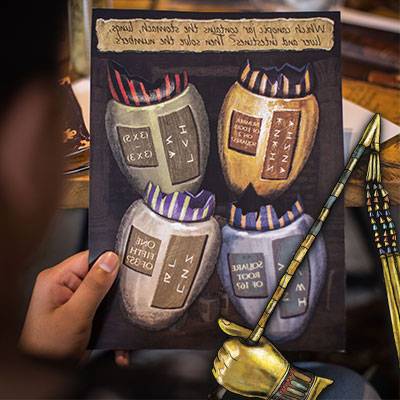
What is an Escape Room Game?
You’ve heard of escape rooms. Maybe even played a few. (Whaaat? You haven't? Here's what it's all about)
And you probably thought, “This would be such a great teaching tool! My students would love this!”
And you were right!
School-based escape games are a great teaching tool. And yes, your students would love them.
Problem is, you probably can’t just take all your students to an escape room. The logistics alone would be a nightmare.
But what you can do is create escape-style experiences for your students.
Not so sure about escape rooms yet? No worries.
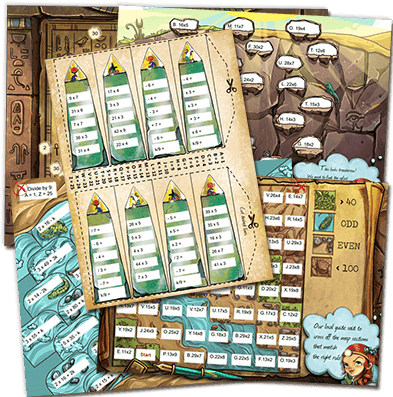
Try these worksheet activities instead. They integrate the creative puzzles and challenges of an escape room experience in a format you're already familiar with.

But will it Work in *My* Students home?
Absolutely!
Yeah, I know professional escape rooms can be pretty fancy. They have secret doors that pop open … laser mazes … zombies chained to the wall ...
The thought of building something like that probably sounds just a little daunting. Plus, you might get in trouble if you started installing Tomb-Raider-esque traps under certain students’ desks.
And you’re obviously not allowed to bring zombies to work. Duh.
None of this prevents you from creating a themed narrative that presents your students with escape-room inspired puzzles and challenges, though. You don't need to be a genius to reap the benefits of escape rooms.
For example, check out this interview with ROTC professor, Major Rex Thomen, who used DIY escape games to help military college students practice critical thinking skills. Or this mom who did one for her kids birthday party.
Plus, your students already want to escape from school, so this shouldn’t be a difficult sell.
Furthermore, some children have to escape more than just a room, and together, we can help.

Will My Students Participate?
They will.
Here’s why.
Instead of lecturing or assigning reading and writing tasks (yaaaawn), you’re going to put your students in the middle of a story and give them an opportunity to accomplish a fictional objective within a given time limit.
Not only does this get them up and out of their seats, it’s a chance to compete with their classmates, show off their individual skills, interact with each other, and experience big “ah-ha!” moments and wins.
Sure, good grades are nice, but defusing an imaginary bomb with only seconds left on the clock is so much more satisfying!
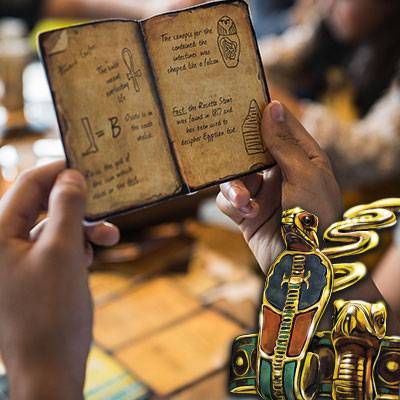
Don't believe it? See for yourself how this teacher transformed her classroom into a thrilling, engagement-securing adventure!
Start with a Printable Kit:
Like all downloadable teachers resources, a DIY Escape Room Kit saves you time (so you can keep your sanity). Trust me, making an escape room from scratch is at least 3 weekends of work, even when you have a goblin horde at your disposal...
The best kits for classrooms will allow you to:
- Print them out as many times as you like: This way, you can divide your class into teams who can all play at once. Furthermore, you'll want to reprint and play it again next year, as a highlight of your curriculum.
- Be editable: It's fun to add your own touches to the school escape game, like class name, in-jokes, photos, etc... Customizing should be optional, but if you have the time, it's a lot of fun. This also means you can use the kit as part of an assignment for your kids to make their own cut-down escape room. (Trust me, this is an assignment the kids will love! Some of our best Design-Wizards are kids!)
- Not too hard: Unless you're teaching to Einstein's grandkids, you'll need an escape kit that's age appropriate. The 2 below have been balanced well:
Save time by downloading a Student Escape Experience Kit:
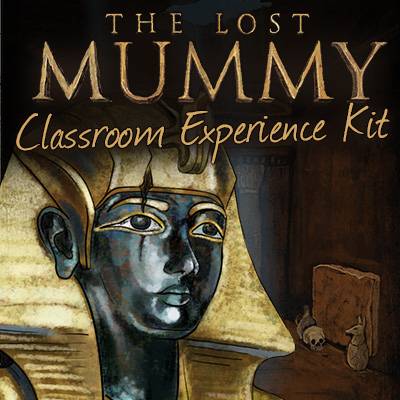
The Lost Mummy Experience Kit
Transform your students home, or your classroom, into an immersive learning experience with this ready-to-play educational pack.
The Lost Mummy educational experience kit is designed specifically for teachers to use with their ancient history curriculum and is perfect for engaging classes of 8-13-year-olds.
This educational pack comes complete with 2-3 lessons of (completely customizable) curriculum-aligned content that immerses your students in the people and culture of ancient Egypt.
It's all the benefits of escape games, with all the educational 'meat' of a history lesson.
This works perfectly as an introduction to the curriculum, or a fun follow-up activity to check comprehension.
There's More! We've Got Games For Math Too:
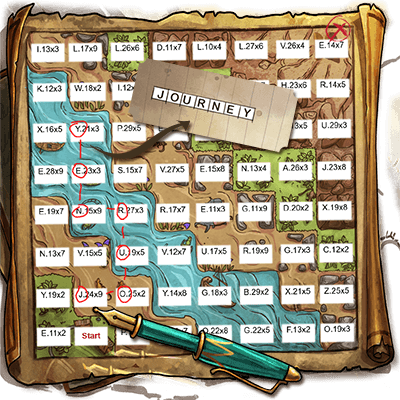
These math worksheets combine creative problem-solving with traditional equations. The end result? Your kids will LOVE their next math lesson!

Alternatively, Design an Educational Escape Game yourself:
(Warning: starting from scratch is super fun but takes a LOT of time to do).
If you decide to build your own game, your imagination is the limit when it comes to how simple or elaborate you want to make it.
Plus, you can always start with something simple and build upon it over time as you assess outcomes and collect student feedback (i.e. use your students as guinea pigs!)
To get started, use your subject area to create a related theme, narrative, and objective for students to work toward.
Choose an Engaging Objective:
Create a narrative in which clues and puzzles require students to use the parallels you want them to learn or recount. Then add the magic - make it fun!
Here's why:
These are booooring objectives:
- Write a five-page essay exploring the parallels between John Steinbeck’s East of Eden and the Cain and Abel story in the Bible, or
- Prove that if two parallel lines are cut by a transversal, then the corresponding angles are congruent.
These are exciting!
- Students are production assistants on the Warner Bros. lot in 1954 and must find Elia Kazan’s missing shooting script for East of Eden before anyone discovers it’s missing. Or,
- Students must find a lost treasure in an abandoned mine using an old map and their knowledge of geometry.
Here are a few more examples, along with academic subjects that might be a good fit.
- Scientists must race the clock to find an antidote to a deadly bioagent (chemistry, social studies).
- Detectives must solve a murder mystery (chemistry, social studies).
- Archaeologists must find and destroy a cursed historical artifact (physics, history, geography).
- Treasure hunters must escape from a cursed Egyptian tomb (history).
- WWII spies must uncover a secret German or Soviet plot (history, geography).
- Party guests must discover how Jay Gatsby made his fortune (literature).
- Space explorers must avoid a collision with an asteroid (physics, astronomy).
- Art thieves must steal the right set of paintings from a museum (art history).
- Space station engineers must write a program that keeps the life support system online while repairs are made (computer science, physics).
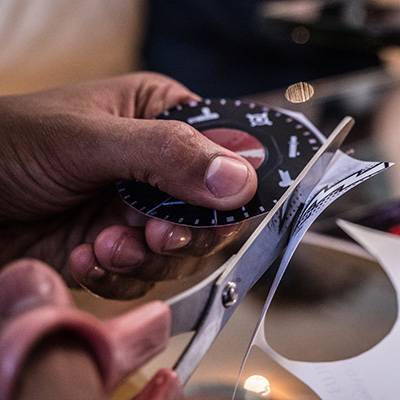
Collect Fun puzzle ideas
Once you have an idea for your game, come up with a series of clues and puzzles that will lead students toward the objective. Here's a big list of cheap-to-make escape room puzzles to get you started.
You can design puzzles to bring out specific escape game benefits, such as critical thinking or teamwork. Alternatively, just grab whatever puzzles are most fun!
You can write your clues on index cards or print them out (you can buy perforated “postcard” paper at most office supply stores) and laminate them. Or you can get really creative and make “clue props” from thrift-store buys or various types of printed paper (distressed parchment, vintage newsprint, graph paper, etc.).
Set up your game so students must answer the questions or solve the problems on each card in order to move on to the next step. You can add to the excitement by locking clues in padlocked boxes, hiding them in books, or requiring students to decode them using cipher keys, using digital locks like this, or even just a traditional key and a locked door.
The more closely you can align these challenges to your subject matter and narrative, the more satisfying the overall game will be, but any multi-step puzzles that require teamwork and communication to solve will give students opportunities to practice valuable skills.
For a more detailed guide to creating your first game, check out this Blueprint for Crafting Your First Escape Room.
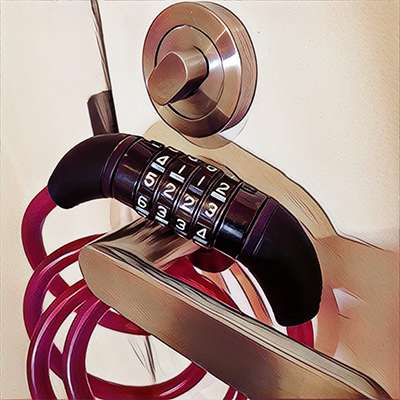
Keep in mind that, although this type of learning tool is based on escape games, the objective doesn’t necessarily have to be related to an actual escape. Any time-sensitive goal will do. (Handy tip: Zombies beating on the door will transform any goal into a time-sensitive one!)
If your subject area doesn’t immediately bring to mind a specific narrative, you might find some inspiration in this list of escape room themes.
Save Time With These Ready-Made Templates
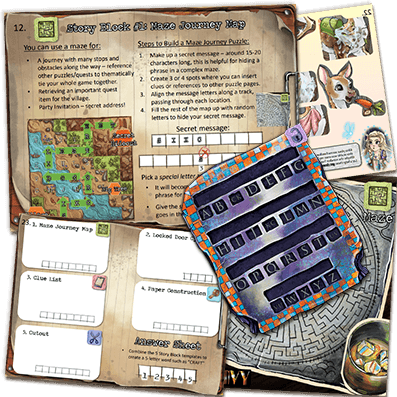
This is the Escape Room Master Class. We've fully-loaded the activity pack with all the printable content you'll need to design an escape room game with your students.
These ready-to-go puzzles, templates, and props ignite kids creativity, in your most engaging lesson ever!
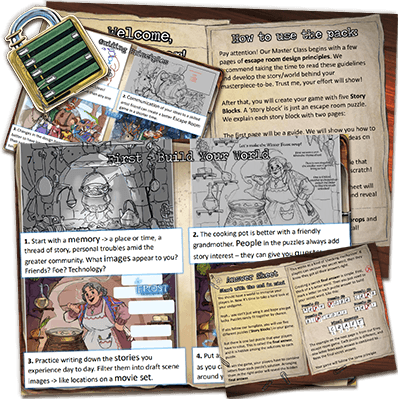
Follow-up after the Student Escape Game.
Once the game is over, it still serves as a learning tool.
Encourage cognitive awareness by quizzing students afterward on their – and their teams’ – performance during the game. Ask them what they could have done differently to work faster or smarter. Give them an opportunity to examine their successes and failures and share their thoughts on both.
Additionally, you can show students how game tasks mirror actual job requirements in the real world to help them understand why what you’re teaching is relevant. In certain areas, this might also be a great way to introduce students to potential future career options.
To reinforce the critical thinking and problem-solving skills practiced of your students, set them a team assignment of making a short 10-minute escape room together.
Give teams of students a topic and the desired learning outcome and encourage them to write clues, design puzzles, and challenges, and put their classmates to the test. You can even start them off with the editable game file that comes with one of the downloadable school escape kits above.

Well? What Are You Waiting For?
Teachers today must contend with shorter attention spans and more potential distractions than ever before.
It’s time to unleash your secret weapon: the combination lock!
Not only will you engage your students for the full duration of your class (a monumental feat on its own), you’re likely to rekindle the spark that got you into teaching in the first place!
Escape games are a surefire way to transform any student's home into a lively and positive learning environment.
Students will enjoy learning, retain more, and – most importantly – take with them valuable skills that they’ll need when they reach adulthood.
Can your students apply what they’re learning in practical scenarios?
It’s time to find out.
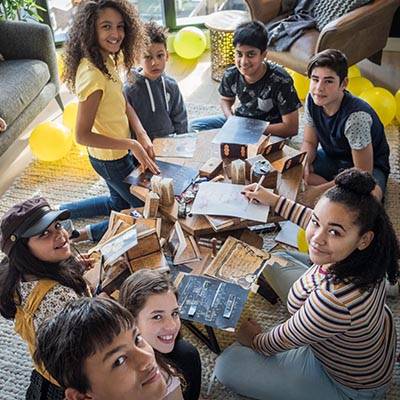
The biggest escape game benefit? A room full of genuine smiles!
Score a reusable Escape Room Kit your students will love:
Add one of these escape room kits to your arsenal of teachers resources for massive student engagement.
Once purchased, you're free to use it for every student, every year, forever!
They download instantly and are ready to print & party.
You can even edit the game, using PowerPoint, to add your own style and puzzles, as well as using it as a project for students to customize and make their own game.
Note: just email us if you require a Purchase Order (PO) & Invoice.
Or, Supercharge Your Classroom With A Couple Of These:
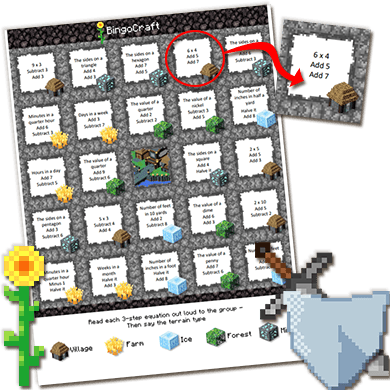
Make learning FUN by combining intriguing puzzles and creative challenges. These worksheet activities are perfect for classrooms and homeschool lessons alike!
